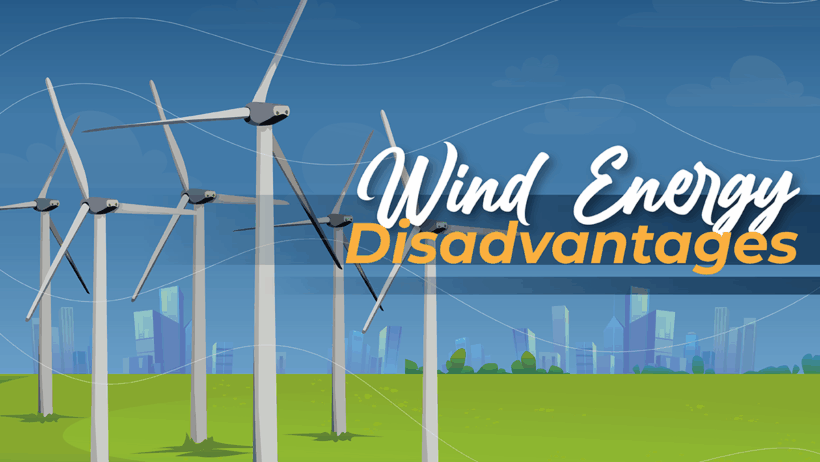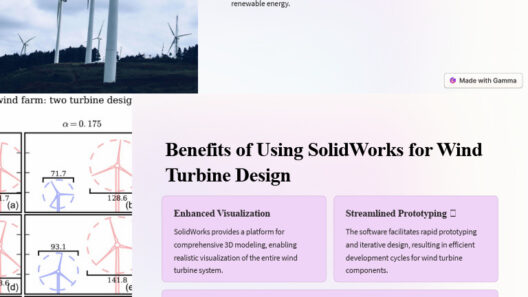Wind energy has emerged as a frontrunner in the realm of renewable resources, basking in the glow of accolades for its sustainability and low carbon footprint. However, as with any energy solution, it is essential to examine the landscape of wind energy critically. What are the limitations of harnessing the wind’s omnipresent power?
While the advantages may dazzle the optimistic, let’s unearth the finer intricacies that delineate the challenges posed by wind energy.
By delving into these restrictions, we can grasp a holistic view of why wind energy may not be the panacea it is often portrayed to be.
Understanding the Varied Limitations of Wind Energy
The initial allure of wind energy lies in its apparent efficiency and potential to minimize environmental degradation. However, a closer exploration unveils a slew of considerations that merit our attention. This examination will encompass economic, environmental, and social factors that elucidate the disadvantages of wind energy.
The High Costs of Production and Maintenance
One crucial aspect that raises eyebrows is the financial commitment required in establishing wind energy infrastructures. Manufacturing, installing, and maintaining wind turbines demands substantial investments. Though the costs have seen a decline, wind farms often involve expensive upfront capital.
These expenses frequently translate into increased electricity prices for consumers in the short term. Additionally, the maintenance of wind turbines is no trivial affair. These structures require regular inspections and repairs, sometimes necessitating specialized knowledge. Unexpected breakdowns can lead to substantial service interruptions, adding to operational costs and vulnerability.
Inconsistencies in Wind Availability
Have you ever noticed how the weather can be fickle? Just as a sunny day can abruptly turn stormy, wind patterns are notoriously unpredictable. The inconsistency of wind availability poses a significant challenge in relying solely on wind energy.
Unlike traditional fossil fuel sources, which can provide a steady and controllable output, wind turbines can only generate electricity when the wind conditions are favorable. This variability necessitates the development of supplemental energy systems or storage solutions to compensate for periods of low wind yield.
Consequently, while a wind farm may produce sufficient energy during peak seasons, its reliability falters during lulls of inactivity, compelling integration with alternative energy sources and complicating energy management strategies.
The Environmental Quandary of Land Use
Touted as a clean energy alternative, wind energy undeniably influences its immediate environment. Construction of sizeable wind farms often necessitates the repurposing of vast land areas, which can lead to habitat destruction.
When migrating wildlife, particularly birds and bats, become ensnared by spinning turbine blades, the ramifications can be dire. In some regions, studies have found that wind farms significantly contribute to avian mortality. Consequently, the ecological balance may be disrupted, seemingly counteracting the eco-friendly image wind energy promotes.
Social Dynamics and Local Resistance
Moreover, despite the promise of clean energy, local communities sometimes push back against the establishment of wind farms. The intrusion of industrial-sized turbines into traditionally serene landscapes can evoke feelings of discontent among residents.
Why would anyone be against harnessing renewable energy sources, you might wonder? The rationale often lies in the perceived negative impacts on property values, aesthetics, and even health concerns surrounding noise pollution produced by the turbines. Such social dynamics can foster resistance that threatens the viability of potential wind energy projects, foiling efforts to transition to greener energy solutions.
Intermittency and the Energy Storage Debate
The challenge of intermittency necessitates a deeper conversation surrounding energy storage solutions. To maximize the utility of wind energy, developing robust energy storage technologies becomes imperative.
However, energy storage systems, such as batteries, also come with their own set of complexities, including environmental impacts tied to resource extraction and the management of electronic waste. Furthermore, storage technologies remain in nascent stages of development, raising questions about their efficiency and long-term viability.
The Struggle for Adequate Infrastructure
Infrastructure for wind energy also necessitates scrutiny. As wind farms spring up, there arises a pressing need for updated electrical grids capable of handling variable energy inputs. Unfortunately, in many regions, existing energy grids are not equipped to seamlessly integrate decentralized renewable energy sources, leading to structural challenges and potential energy waste.
The rectification of this infrastructure gap not only requires investments but also collaborative efforts among government entities, utility providers, and private stakeholders.
Conclusion: A Balanced Perspective
In conclusion, while the wind fills our sails with hope for a cleaner energy future, it is paramount that we navigate the intricacies of its limitations with a discerning lens. The disadvantages of wind energy are not merely trifles; they encapsulate essential considerations for sustainable energy policies.
Only by addressing these challenges head-on can we pursue a balanced approach to energy generation, ensuring that wind energy complements a diversified energy portfolio poised to meet the demands of a sustainable future.






